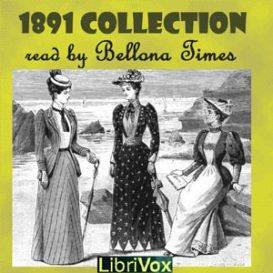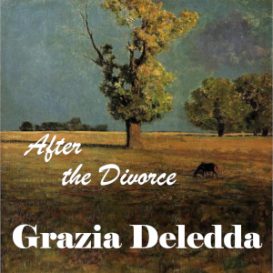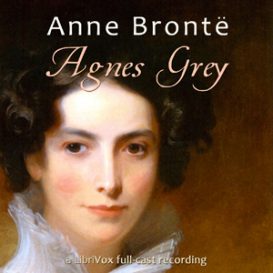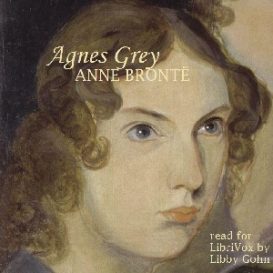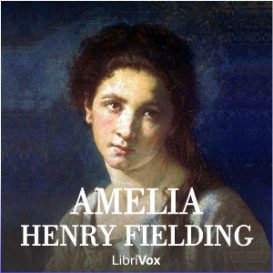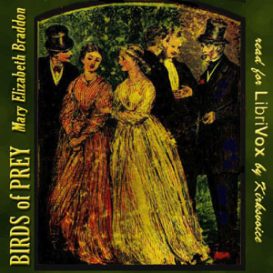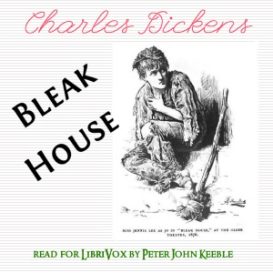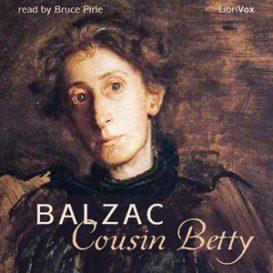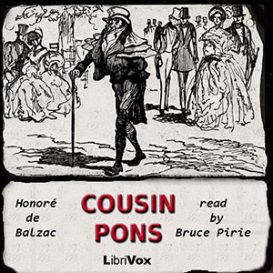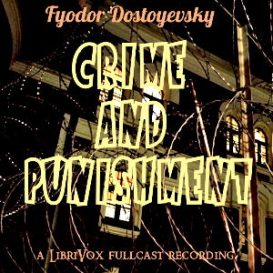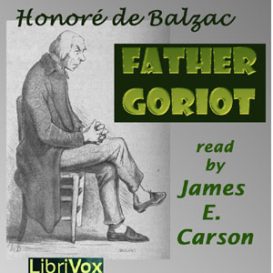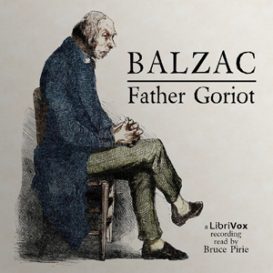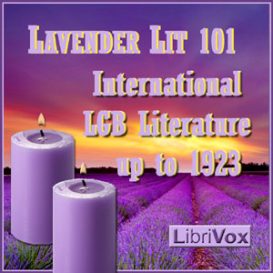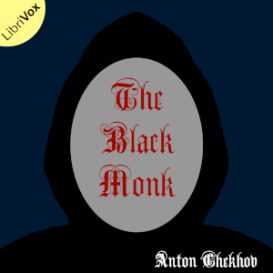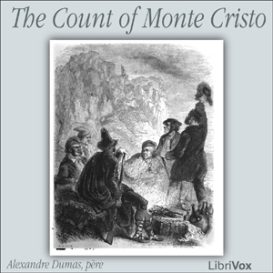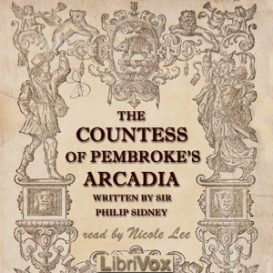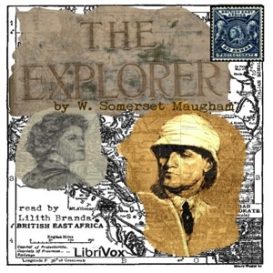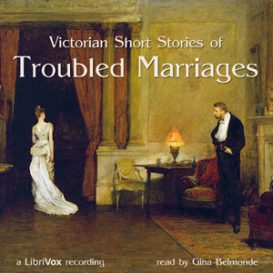Literary Fiction
Showing all 27 results
1891 Collection
A look at the year 1891 through literature and non-fiction essays first published that year, including works by Mary E Wilkins, Sir Arthur Conan Doyle, Sara Orne Jewett, and Oscar Wilde. (Summary by BellonaTimes)
After the Divorce
Giovanna and Costantino Ledda are a happily married couple living with their young child in a Sardinian country village close to their extended family. Costantino is wrongly convicted of murdering his wicked uncle and with no way of supporting herself, Giovanna reluctantly divorces him and is driven to marry Brontu Dejas, a wealthy but brutish drunkard who has always lusted after her. As well as enduring a marriage amounting to slavery, Giovanna is derided by villagers for having two husbands. When Constantino is freed after the real murderer confesses to his crime, he and Giovanna are together again, but this time their relationship is outside the law, and sets both on a path of destruction, at the mercy of religious and social forces they cannot control. The author, Grazia Deledda, won the Nobel Prize for Literature in 1926, for writings which show passion and sympathy for the people of her native Sardinia, and ?After the Divorce? (Dopo il Divorzio) is one of her finest works. – Summary by Tom Denholm
Agnes Grey (Dramatic Reading)
Agnes Grey is the daughter of a minister, whose family comes to financial ruin. Desperate to earn money to care for herself, she takes one of the few jobs allowed to respectable women in the early Victorian era, as a governess to the children of the wealthy. In working with two different families, the Bloomfields and the Murrays, she comes to learn about the troubles that face a young woman who must try to rein in unruly, spoiled children for a living, and about the ability of wealth and status to destroy social values. After her father’s death, Agnes opens a small school with her mother and finds happiness with a man who loves her for herself. (Summary by Wikipedia) Cast: Narrator/Mary Grey/Grandmama Bloomfield: CaprishaPage Agnes Grey: Amanda Friday Edward Weston: Max K?rlinge Alice Grey: Tiffany Halla Colonna Richard Grey: Aidan Brack Mr. Murray/Uncle Robson: Anthony Mrs. Murray/Jem’s Wife: Elizabeth Klett Rosalie Murray: Arielle Lipshaw Matilda Murray: Elizabeth Barr Mr. Hatfield: Algy Pug Jem/Mr. Smith: Martin Geeson Servant: Charlotte Duckett Nancy Brown: Beth Thomas Mrs. Bloomfield: Victoria Martin Tom Bloomfield: Grace Mary Ann Bloomfield: April Gonzales Mr. Bloomfield: Robert Hoffman Betty: Kristingj Audio edited by Amanda Friday
Agnes Grey (Version 3)
Anne Bronte’s semi-autobiographic novel about Agnes Grey, a young woman who becomes a governess to support her family, but finds her new career more difficult than she expected. – Summary by Libby Gohn
Amelia (Vol. 1)
This is the first volume of a three volume novel. In this novel, Amelia marries William Booth against her mother’s desires, and the two must move to London. Fielding explores the issues of married life such as infidelity and whether women’s intelligence is equal to men’s. (Summary by Libby Gohn)
Birds of Prey
The first part of the book builds the characters of four con men who become interconnected and attempt their schemes on each other. This book is the first of a two part story, the second part is the book Charlotte’s Inheritance.
Bleak House (version 4)
Bleak house is one of Dickens finest achievements. It was written for serialisation in 1853 when Dickens was at the peak of his career. Monthly sales substantially exceeded his previous bestseller David Copperfield. Dickens’ mastery of the English language comes to the fore in this book. It is an energetic book: a complex mystery story revolving around the heroine Esther Summerson and her path from childhood to marriage. During the course of Esther?s narration Dickens introduces some wonderful and unforgettable characters, and at the same time provides a searing indictment of the laws? corruption and self-serving interests which prevailed during that time. He pokes fun at the languid and landed aristocracy and questions the societal indifference to the poor. Detection, black comedy, farce, and tragic ruin run through the story. Critics at the time were unenthusiastic but the public were enthralled by it! – Summary by Peter John Keeble
Coningsby, or The New Generation
Coningsby is the first of trilogy of political novels that Disraeli published in the 1840s, and gives an insight into his views of the political turmoil following the passage of the Great Reform Bill by the Whigs in 1832 (a second Reform Bill was passed in 1867 under Disraeli?s Tory leadership as prime minister). While Coningsby looks primarily at political questions, its successor — Sybil, or the Two Nations — was concerned with the ?condition of England? question and the growing social and economic imbalance between rich and poor that in tje writer’s view was hastened (though not begun) by the industrial revolution. Granted that Disraeli was not Dickens or Trollope or Eliot or one of the other giants of British letters in the nineteenth century, it?s a bit unfair to suggest (as some have) that the plots are thin and only there to provide the writer with a podium for setting forth his political and social views. It?s true that Boy Meets Girl, Boy Loses Girl, Boy Gets Girl, but much else happens as well, particularly thanks to the role played by the mysterious figure of the Jewish Sidonia, who in addition to enormous wealth and widespread international connections embodies a kind of wisdom that transcends the mere knowledge acquired by even the best educated Englishmen. Coningsby, himself a product of both Eton and Cambridge, is fortunate enough to be taken under his wing, and intelligent enough to accept his guidance. (Nicholas Clifford)
Cousin Betty
Cousin Betty (La Cousine Bette), published in serial format in 1846, was one of the last and greatest of Balzac’s works. It was part of his long novel collection titled La Com?die Humaine. Set in mid-19th-century France, it tells the story of a woman who resents her position as a “poor relation.” As we follow her schemes to bring ruin upon the more privileged members of her family, we see a society in transition. The stability and idealism of the old order give way to a new bourgeois world in which virtue is strangled in the struggle for power and money. In this novel, Balzac searchingly probes the psychology and motivations of his characters: his work influenced the development of literary realism, as practised by writers such as Dickens, Dostoyevsky, Flaubert, Proust, and Henry James. – Summary by Bruce Pirie
Cousin Pons
Cousin Pons is one of the final works in Balzac’s long novel series titled The Human Comedy. It was published in 1847, along with Cousin Betty, as one of a complementary pair of novels, collectively titled Poor Relations. While Cousin Betty tells the story of a bitter woman who seeks revenge on her wealthier relations, in Cousin Pons, Balzac turns to the story of an timid, innocent man who is exploited and victimized by the wealthier members of his extended family. Balzac offers probing character portraits and an indictment of greed and materialism in this detailed portrait of mid-19th-century French life. He is considered one of the finest European novelists of his century and a significant influence on the development of literary realism. (Summary by Bruce Pirie)
Cradock Nowell Vol. 3
Cradock Nowell: a Tale of the New Forest is a three-volume novel by R. D. Blackmore published in 1866. Set in the New Forest and in London, it follows the fortunes of Cradock Nowell who, at the end of Volume 1, is thrown out of his family home and disowned by his father following the suspicious death of Cradock’s twin brother Clayton, their father’s favorite. In Volume 2, the story picks up with those left behind at Nowelhurst and the question of who is now heir apparent to the Nowell fortune. Meanwhile, Cradock discovers life independent of the Nowell name and fortune is not easy. At the end of volume 2, we leave Cradock fighting for his life and his beloved Amy rushing to be with him. It was Blackmore’s second novel, and the novel he wrote prior to his most famous work Lorna Doone. *Warning: Some listeners may be offended by some of the language. Words that were considered acceptable in the nineteenth century are not always politically correct today. It is LibriVox policy to leave the original wording as the author intended. – Summary by Lynne Thompson Other volumes in the series: Cradock Nowell, volume 1 Cradock Nowell, volume 2
Crime and Punishment (version 2)
“Crime and Punishment” is a novel by the Russian author Fyodor Dostoyevsky. It was first published in the literary journal “The Russian Messenger” in twelve monthly installments during 1866. It was later published in a single volume. It is the second of Dostoyevsky’s full-length novels following his return from ten years of exile in Siberia. Crime and Punishment is considered the first great novel of his “mature” period of writing. “Crime and Punishment” focuses on the mental anguish and moral dilemmas of Rodion Raskolnikov, an impoverished ex-student in St. Petersburg who formulates and executes a plan to kill an unscrupulous pawnbroker for her cash. Raskolnikov argues that with the pawnbroker’s money he can perform good deeds to counterbalance the crime, while ridding the world of a worthless vermin. He also commits this murder to test his own hypothesis that some people are naturally capable of such things, and even have the right to do them. Several times throughout the novel, Raskolnikov justifies his actions by comparing himself with Napoleon Bonaparte, believing that murder is permissible in pursuit of a higher purpose. Much of the suspense of the novel is psychological, as the reader agonizes over Raskolnikov’s efforts to evade justice for his crime. Much of it is also moral, as the question of whether or not Raskolnikov himself can find redemption as a human being leads to a surprising culmination. – Summary by Wikipedia (edited by Expatriate)
Crime and Punishment (Version 4 Dramatic Reading)
The story tells of the inner turmoil of Rodion Raskolnikov, a student in St. Petersburg who commits murder. His psychological and moral agitation is furthered and complicated by his family’s arrival in St. Petersburg, his sister’s engagement to a manipulative and unworthy man, and his encounters with the impoverished and troubled Marmeladov family. Summary by Mary J. Cast Narrator: Mary J and Piotr Nater Rodion Romanovitch Raskolnikov: Chris Pyle Semyon Zaharovitch Marmeladov: John Burlinson Katerina Ivanovna Marmeladova: TJ Burns Nastasya Petrovna: Patricia Silveira Pulcheria Alexandrovna Raskolnikova: Beth Thomas Alexander Grigorievich Zametov: Foon Dmitri Prokofitch Razumihin: Zach K. Zossimov: Brett G. Hirsch Pyotr Petrovitch Luzhin: Eduardo Amalia Fyodorovna Lippevechsel (Amalia Ludwigovna, Amalia Ivanovna): Availle Avdotya Romanovna Raskolnikova (Dounia): K.G.Cross Sofya Semyonovna Marmeladova (Sonia): Wanda White Arkady Ivanovitch Svidriga?lov: Antti V?h?kainu Porfiry Petrovitch: tovarisch Andrey Semyonovitch Lebeziatnikov: Peter Tucker Various other roles read by: tiwo007, alanmapstone, Algy Pug, Eva Davis, Antonio Soto Pati?o, Dafni Ma, Jael Baldwin, Antti V?h?kainu, Mark Chulsky, Leanne Yau, Lian Pang, linny, Lydia, MaryAnn, Melanie T, A LibriVox Volunteer, KHand, Oxenhandler, Paezra, Tom Penn, Recording Person, David Purdy, SaraHale, sashelliott, SherlHolmesMD, Larry Wilson, Christine Lehmar, Ashur Gharavi, Joseph Tabler, Michele Eaton, Katherine Edmar, Zechariah Ramar Edited by: linny Proof listeners: Kim, linny, Piotr Nater, KevinS, Tomewing, Grace Peters, Lynette Caulkins, and KHand.
Crome Yellow, Version 2
Fascinating and brilliant at many levels, Huxley’s spoof of Lady Ottoline Morrell’s famous bohemian gatherings is difficult to categorize. The ironic tone and caricaturish rendering of some characters makes it partly entertaining satire, but intertwined with the irony are a very human love story and much poignant social commentary. Denis Stone (Huxley himself) is a young poet hopelessly enamored of the languid Anne Wimbush, who comes to Priscilla Wimbush’s Crome estate for several weeks of intellectual and artistic escape. Along the way of his love affair, he engages in or eavesdrops upon conversations with other guests about the War, about eschatology, about future society, about Sex, about Art, about Love. Several of these dialogues directly foreshadow themes of Huxley’s later dystopian masterpiece, Brave New World. Others show a tragic prescience of another great European war on its way, an awareness that future tragedy might attempt to complete the unfinished business of the recent Great War. Huxley’s first novel, Crome Yellow is well worth reading in its own right, while containing embryonic forms of so much of Huxley’s later intellectual themes. – Summary by Expatriate
Father Goriot
One of Balzac’s most popular works, set around 1815 during the re-ascendancy of the Bourbon kings following the defeat of Napoleon. Said to have been an inspiration to Charles Dickens and Henry James as well as others, the novel seeks to portray the realism of scenes and people. It is also a commentary upon the changing social strata and mores of the day. (Summary by JCarson)
Father Goriot (version 2)
Father Goriot (Le P?re Goriot), published in 1835, is widely considered to be Balzac’s finest and most popular novel. It is set in Paris in 1819, after Napoleon’s defeat and the restoration of the Bourbon monarchy. France was undergoing massive social upheaval, as the new bourgeoisie jockeyed for position alongside the old aristocracy. Against this backdrop, we follow the lives of Goriot, an old man who irrationally dotes on his daughters; Vautrin, a shadowy criminal mastermind; and Rastignac, a young man from the provinces who studies how to navigate the complexities and climb the ladder of Parisian society. Balzac’s masterful use of physical and psychological detail makes this book a landmark in the development of realism in western literature. – Summary by Bruce Pirie
Lavender Lit 101 – International LGB Literature up to 1923
International LGB Literature up to 1923 This is a collection of 30 American and European gay, lesbian, & bisexual writers from the 16th thru early 20th Centuries. Heavy on poetry — including a rousing WWI anthem from 1915 — with a few short stories and essays. Non-English works should be read where possible in their original language. – Summary by BellonaTimes
Library of the World’s Best Literature, Ancient and Modern, volume 11
The Library of the World’s Best Literature, Ancient and Modern, is a work of enormous proportions. Setting out with the simple goal of offering “American households a mass of good reading”, the editors drew from literature of all times and all kinds what they considered the best pieces of human writing, and compiled an ambitious collection of 45 volumes (with a 46th being an index-guide). Besides the selection and translation of a huge number of poems, letters, short stories and sections of books, the collection offers, before each chapter, a short essay about the author or subject in question. In many cases, chapters contemplate not one author, but certain groups of works, organized by nationality, subject or period; there is, thus, a chapter on Accadian-Babylonian literature, one on the Holy Grail, and one on Chansons, for example. The result is a collection that holds the interest, for the variety of subjects and forms, but also as a means of first contact with such famous and important authors that many people have heard of, but never read, such as Abelard, Dante or Lord Byron. According to the editor Charles Dudley Warner, this collection “is not a library of reference only, but a library to be read.” This eleventh volume contains chapters from “Dana” to “Dickens”. (Summary by Leni) – Summary by Leni
The Absentee
Published in 1812, ?The Absentee? by Maria Edgeworth examines social injustice in 19th-century Britain. At that time, the management of many Irish estates suffered from the absenteeism of their Anglo-Irish landlords. We meet Lord and Lady Clonbrony. Lord Clonbrony struggles with debt, while Lady Clonbrony tries to shed her Irish connections and earn status in London?s high society (known as ?the ton.?) Meanwhile, their son, Lord Colambre, is wary of the entanglements of that society and escapes to the family estate in Ireland, where he discovers the abuses that have arisen in the family?s absence. Maria Edgeworth was a pioneer of realism in fiction, and one of the most successful and popular novelists of her time. She offered satirical portraits of society manners and sympathetic treatment of regional life. Her work won admiration from authors such as Jane Austen and Sir Walter Scott. ?The Absentee? is named in the reference list ?1001 Books You Must Read Before You Die.? – Summary by Bruce Pirie
The Black Monk
Aspiring academic Andrei Kovrin, while summering in the countryside per the advice of a physician, is haunted by the apparition of a black monk that appears only to him and encourages him in his intellectual pursuits. Although Kovrin is the only one who can see the apparition, the monk assures him that, even if he were a creation of the imagination, he would still be a thing of nature and consequently real. Chekhov uses this vehicle for a gothic exploration into scholarly obsession and madness. – Summary by Daniel Davison
The Bohemians of the Latin Quarter
As much as any other work of literature, Henri Murger?s 1851 collection of witty sketches Sc?nes de la vie de boh?me shaped the later romanticized image of the bohemian artist: independent, insouciant, exuberantly lustful, devoted to Art for Art?s sake no matter how cold and hungry the artist might be. Four young Parisian artists, Schaunard the composer, Marcel the painter, Rodolphe the poet, and Colline the philosopher, form an informal Bohemian alliance dedicated to Art and the joy of Life. Pretty and faithless young mistresses come and go from their beds, most notably Mimi, Ph?mie, and Musette, while the young artists do their best to foil their creditors and feed their bellies on the way to artistic glory. Resisting the conforming forces of Success and Society is their greatest challenge, and in the end the question is: Does a time come at last to give up the joys of Bohemia? ( Expatriate)
The Count of Monte Cristo
The Count of Monte Cristo (French: Le Comte de Monte-Cristo) is an adventure novel by Alexandre Dumas, p?re. It is often considered, along with The Three Musketeers, as Dumas’s most popular work. The writing of the work was completed in 1844. Like many of his novels, it is expanded from the plot outlines suggested by his collaborating ghostwriter Auguste Maquet. The story takes place in France, Italy, islands in the Mediterranean and the Levant during the historical events of 1815?1838 (from just before the Hundred Days through the reign of Louis-Philippe of France). The historical setting is a fundamental element of the book. It is primarily concerned with themes of justice, vengeance, mercy, and forgiveness, and is told in the style of an adventure story. (Summary from Wikipedia) This book contains alternate versions of a number of chapters ? indicated by an alt after the file number. The Zip files contain both versions of these chapters. There are 2 versions of the M4Bs made , one containing the original files for these chapters (4 parts), the other containing the alternate files for the chapters (5 parts).
The Countess of Pembroke’s Arcadia
Arcadia is a prose work by Sir Philip Sidney, a classic of the Renaissance pastoral and a work of high romance, a fleeting vision of a lost world of gallantry and adventure, representing an escape from the realities of politics in the Elizabethan court. It contributes to the ongoing legend of Sidney as the perfect Renaissance man, “soldier, scholar, horseman he/And all he did done perfectly”. – Summary by Nicole Lee
The Creators: A Comedy
Jane Holland is a genius, the greatest of a group of extraordinary literary friends. She has an intense artistic and intellectual kinship with George Tanqueray, another remarkable novelist. Despite this keen spiritual relationship, both Holland and Tanqueray allow themselves to fall against their wills into more conventional romantic commitments, leading to agonizing crises of heart and mind and art. Another of May Sinclair?s marvelous philosophical novels, this masterpiece explores the great dilemmas of artistic Genius and the obstacles posed to it by Love, by philistine society, by the two-faced allure of popularity, by human jealousy, by the conventions of marriage and family. More deeply, Sinclair here lays bare the excruciating choices required particularly of a woman genius, and the double standards applied to her in a society that allowed so much indulgence to a man considered to have such artistic gifts. Demonic or angelic, curse or blessing, affliction or joy, the involuntary gifting of Genius sets any human being apart from the uncomprehending and judgmental society in which she must live, a condition delineated in ?The Creators? with delicate subtlety and fierce passion. ( Expatriate)
The Crocodile (Version 2)
Fyodor Dostoevesky’s “The Crocodile,” first published in 1865 in the magazine “Epoch,” is the story of Ivan Matveitch, a young man who gets swallowed by a crocodile, and survives. What will life be like for him, inside the crocodile? How will his marriage with Elena Ivanovna fare? (Summary by Phillip Cryan)
The Explorer
An early novel by W. Somerset Maugham about conflicting feelings of self-integrity, filial love, romantic love. Lucy Allerton and Alec MacKenzie have to choose between grasping happiness that is their due and upholding a set of moral values that define themselves. – Summary by Lilith Branda
Victorian Short Stories of Troubled Marriages
A delightful collection of short stories by some of the luminary authors of the Victorian era. These stories explore the truth behind the Victorian marriage. – Summary by Gina Belmonde


